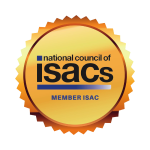In a recent post in HSToday, Scott Algeier, Executive Director of the IT-ISAC discusses how the devastating attacks on 9/11 made painfully clear that the U.S. government’s information sharing practices were woefully inadequate and in need of reform. After 9/11, a requirement for dynamic collaboration between the government and critical infrastructure operators was identified as an area in need of significant improvements. Progress has been achieved, but slowly. The establishment of DHS and the Critical Infrastructure Advisory Council (CIPAC) created the organizational framework for increased security collaboration and information sharing between the government and industry. Of course there are still challenges today. The advent of the internet and today’s interconnected world has made public-private cooperation all the more important. A myriad of cyber based threat actors have compelled the need for additional government and industry collaboration. To confront the growing cyber threat, Algeier recommends creating a National Cyber Strategy, building a nationally integrated cyber warning and response coordinating body, imposing costs on threat actors, and increasing organizations capacity to defend against cyberattacks. Ultimately, public-private collaboration has made great progress over the past twenty years, but today’s evolving threats require even more cooperation. The post provides an excellent overview of the past, present, and future of American government and industry cooperation, including how the role of the ISAC’s was propelled by the 9/11 attacks. Read the full post at HSToday.
You are here
Related Resources
Dec 10, 2024 in Emergency Response & Recovery, in Federal & State Resources, in General Security and Resilience
Dec 10, 2024 in General Security and Resilience
Dec 03, 2024 in Federal & State Resources, in General Security and Resilience, in Natural Disasters

